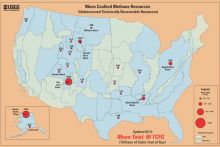
The United States both imports and exports petroleum (a broad term that includes crude oil and refined products such as gasoline, diesel and jet fuels, and other products; “petroleum” and “oil” are sometimes used interchangeably1) in various quantities depending on cost and demand. Overall, the United States imports more than it exports, making it a net importer of petroleum. In 2017, imports provided 19% of the country’s demand for petroleum.2
Most of the petroleum imported by the U.S. is crude oil (70-80% of total petroleum imports, varying slightly from year to year).3 Because of the country’s extensive refining capabilities, particularly near major ports on the Gulf Coast, refined products have historically made up the vast majority of U.S. petroleum exports.2,3 However, in the last few years, the U.S. has begun exporting a significant quantity of crude oil, due largely to high domestic oil production. In the third quarter of 2018, crude oil accounted for approximately one quarter of all U.S. petroleum exports.
In the third quarter of 2018, the U.S. imported roughly 10.2 million barrels of petroleum per day,3 with the largest amounts coming from Canada (41%) and Saudi Arabia (10%).4
In the third quarter of 2018, the U.S. exported roughly 7.5 million barrels of petroleum per day.3 The largest markets for U.S. petroleum exports are Mexico and Canada, but the U.S. exports petroleum to 180 countries.5
The recent increase in domestic oil production, especially since 2010, has had a significant impact on U.S. petroleum imports and exports. From 2005 to 2015, the United States’ reliance on petroleum imports fell from 60% to 25% of total consumption,6 while exports increased by over 300%.3 Since 2015, imports have remained fairly steady at approximately 10 million barrels per day, but exports have continued to increase, from 4.7 million barrels per day in 2015 to 7.6 million barrels per day in early-mid-2018. The Energy Information Administration projects that U.S. import reliance for oil will continue to fall over the coming decade.6
References
1 What is the difference between crude oil, petroleum products, and petroleum? Energy Information Administration
2 Energy Explained – Oil Imports and Exports Energy Information Administration
3 Monthly Energy Review – Petroleum Imports and Exports by Type Energy Information Administration
4 Monthly Energy Review – Imports from OPEC countries and non-OPEC countries Energy Information Administration
5 How much petroleum does the United States import and export? Energy Information Administration
6 Annual Energy Outlook Energy Information Administration
Learn More:
- Energy Explained: Oil Imports and Exports (Webpage), Energy Information Administration
Overview of U.S. petroleum imports over time and by main countries of origin, explains types of imported products, and discusses United States oil exports.
- Annual Energy Outlook (Report), Energy Information Administration
Technical summary of projected energy production, imports, exports, and more through 2050.
- International Energy Production, Exports, and Imports by Country (Web Tool), International Energy Agency
Interactive flow diagram showing the production, exports, and imports of oil and other energy sources globally and by country, for every year going back to 1973.





